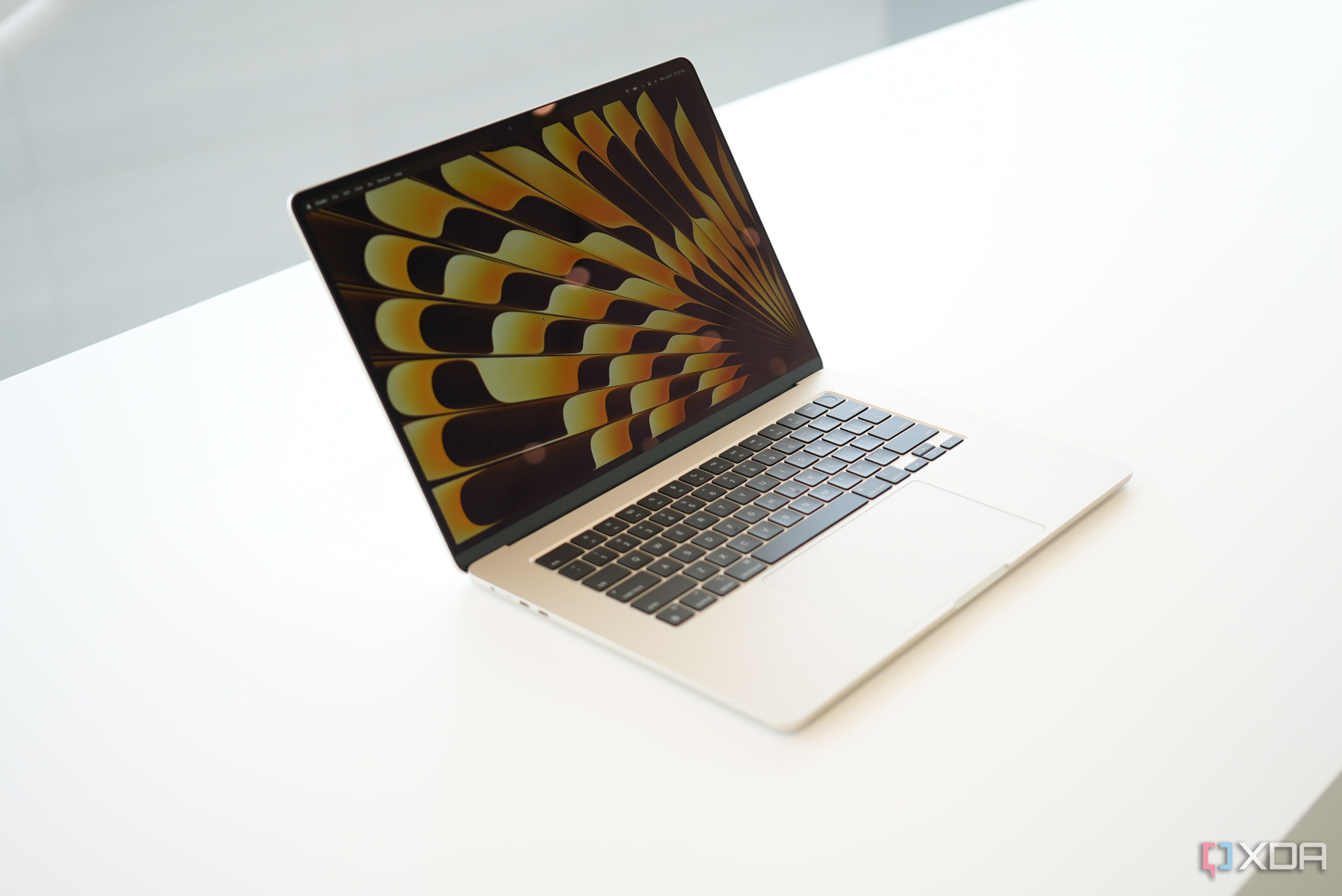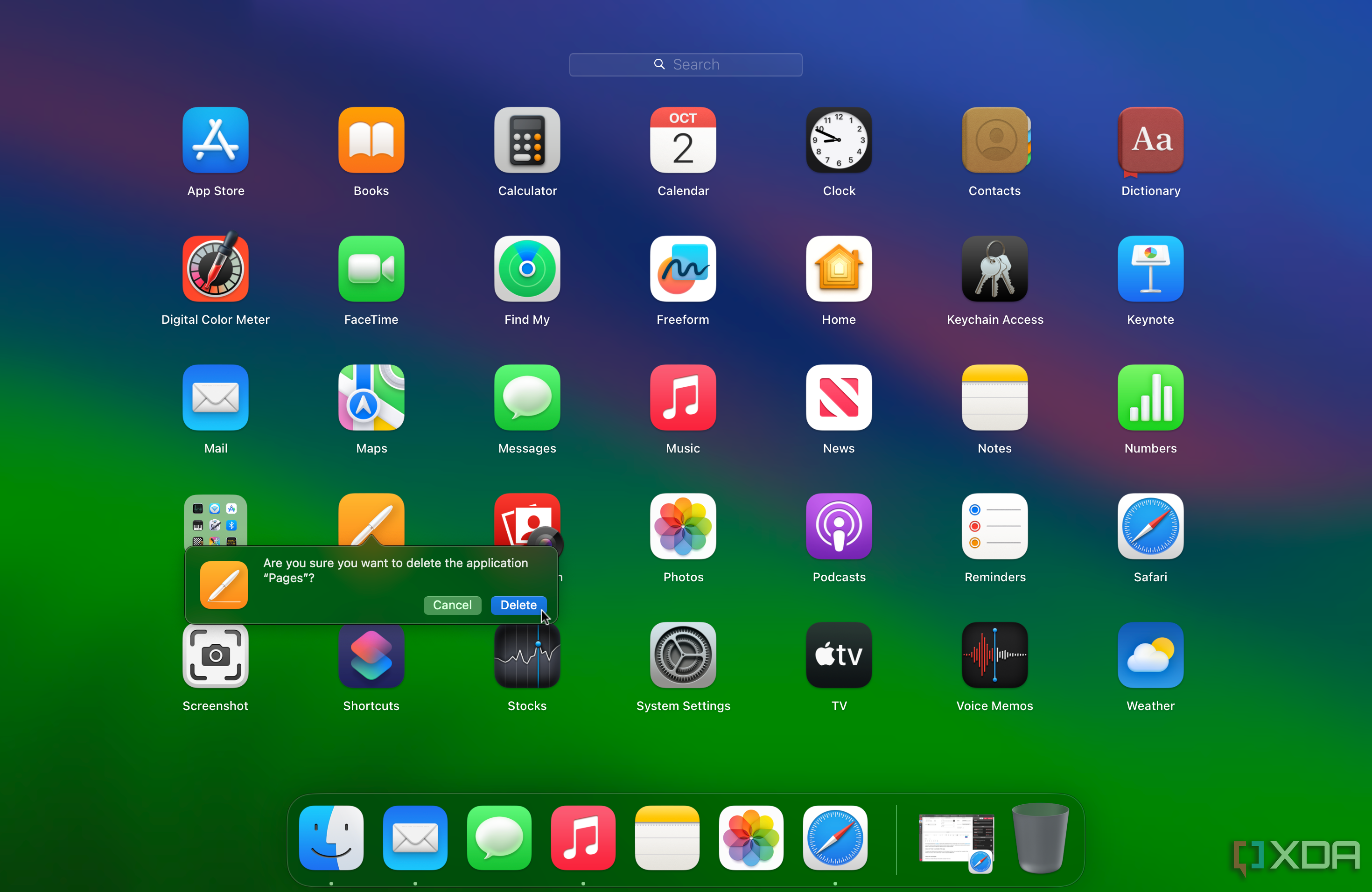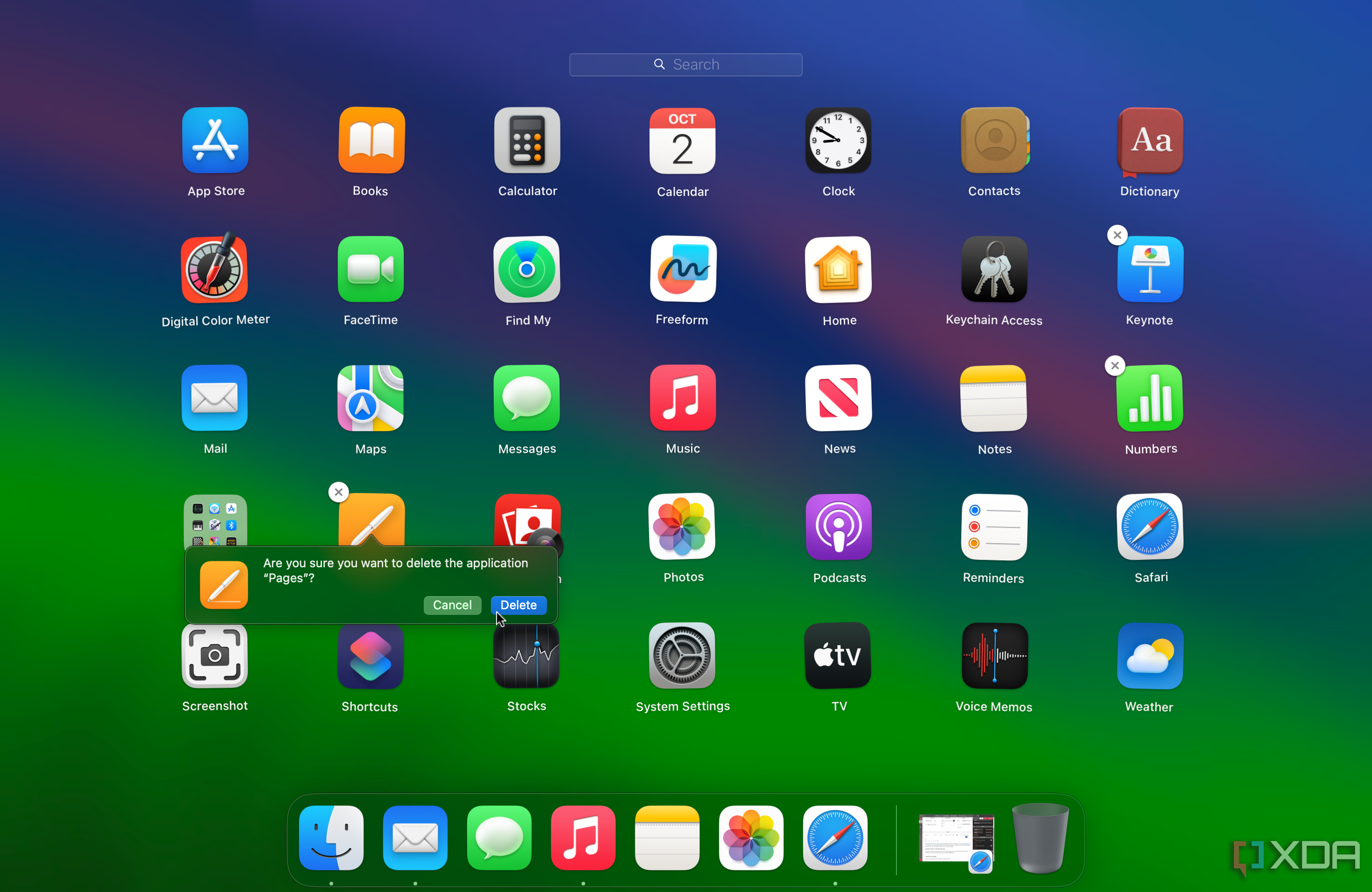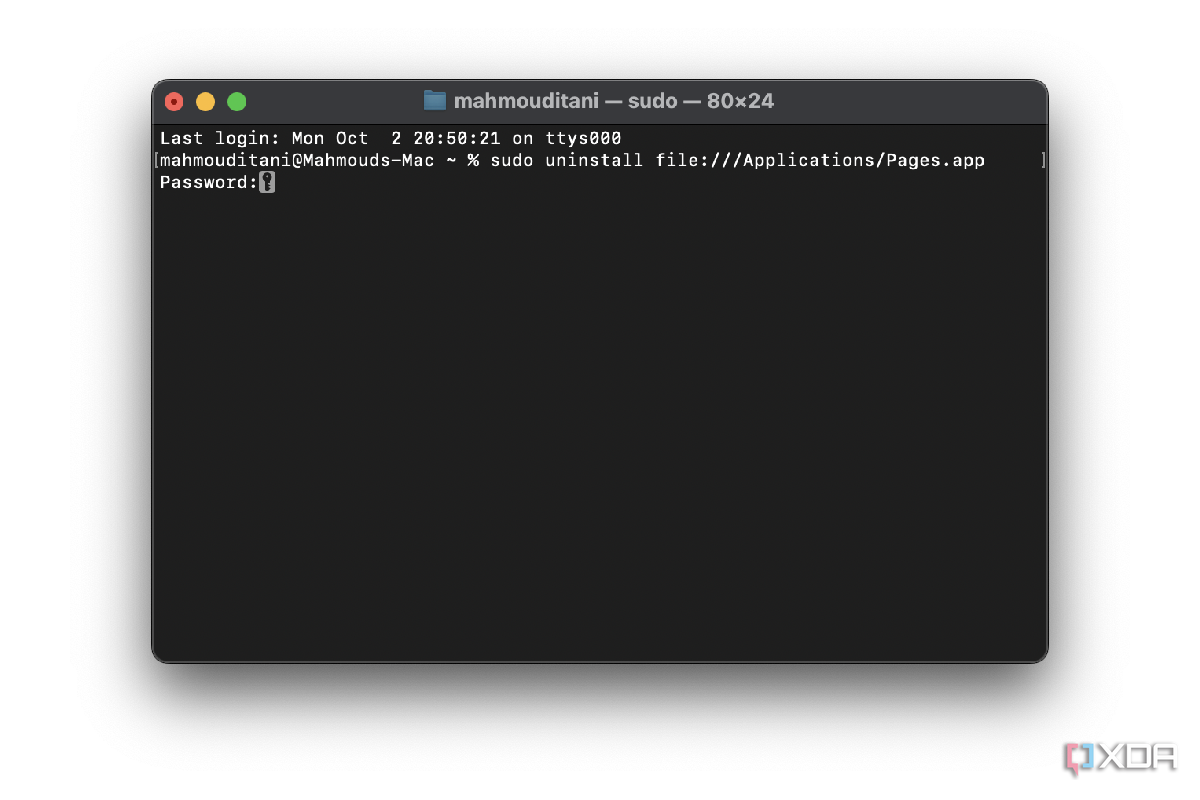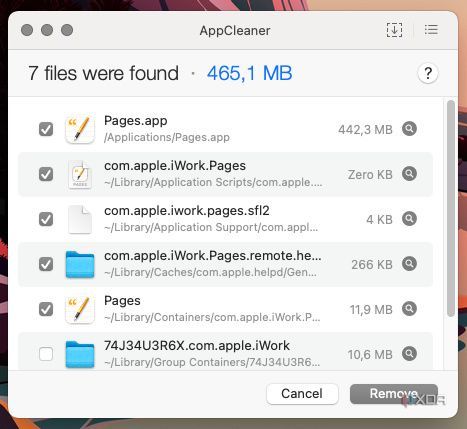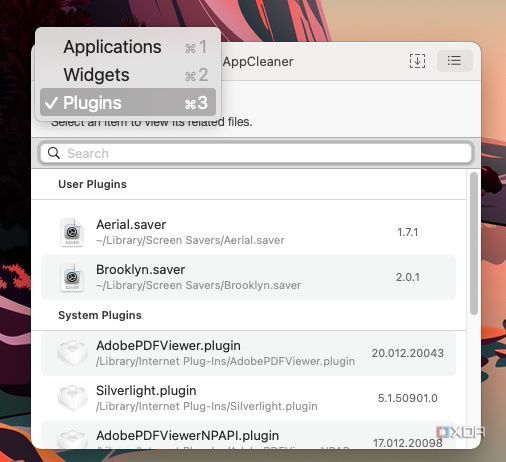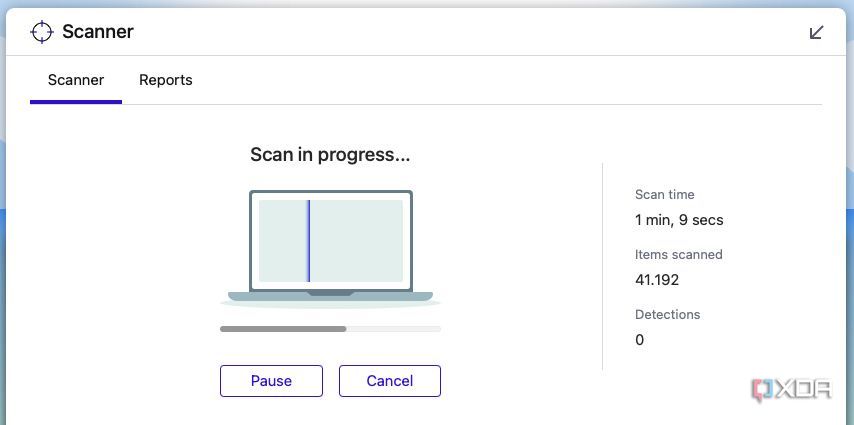Quick Links
One of the good things about new Macs is that they offer straightforward ways to uninstall apps. So if you're running macOS Sonoma or an earlier version, you can pick between different methods to delete an application. The difficulty and effectiveness differ based on what you opt for, so we will be listing your options and you can choose accordingly.
Using the Trash to uninstall a Mac app
The easiest way to delete an app is to drag its icon to the Trash placed in the Dock. Once you drag it there, the system will ask whether you're sure you want to delete the app. Confirm by tapping the Delete button.
Using the Launchpad
Another way to uninstall a Mac app is through the Launchpad. Here's how:
- Go to the Launchpad.
- Tap and hold on the app icon. This will trigger Jiggle Mode.
- Hit the X button on the app you want to uninstall.
-
Confirm by clicking the Delete button.
Using Terminal
If you're more of a Terminal commands kind of person, then there's a method for you:
- Launch the Terminal app.
-
Type the following command:
sudo uninstall file://
- Drag the app you would like to uninstall to the Terminal window.
- Hit the Return button.
-
Authenticate using your administrator password.
Using an app's bundled uninstaller
Some third-party apps offer an uninstaller by default. In this case, you will see an app called [app name] Uninstaller in the Applications folder. You can launch it to uninstall it, along with the main app that is bundled with it.
Using AppCleaner to delete a macOS application
For a thorough cleaning after uninstalling an app, look no further than AppCleaner. I have been using this free app for years, and it has never let me down once. You may want to pin the AppCleaner icon to your Dock. This way, when you want to uninstall something, you can drag the app's icon to AppCleaner in the Dock. This will open up AppCleaner and give you a complete list of all the files associated with that app.
Make sure all the boxes on the left-hand side are ticked, then click Remove. For some apps, you may have to confirm this removal with your administrator password. This will then nuke the files.
You can also remove widgets and plugins directly from AppCleaner. So, if you have a particularly annoying plugin that you can't completely remove from your system, let AppCleaner handle it for you.
Looking for malware and spam files with Malwarebytes
Although Windows is more of a higher target when it comes to spam and malware, macOS has its fair share, too. That's why if you carelessly install something dodgy (i.e. outside the App Store), you might end up with some malware on your system. AppCleaner will likely not catch it, so you will have to turn to Malwarebytes.
The program will push you towards a paid Premium version, but just say no, and it will grudgingly give you a 14-day trial period instead. You can easily downgrade to the free version after this has expired. Then, give Malwarebytes full disk access to your Mac and start the scan.
Bottom line
As you can see, there are plenty of ways to delete an app on macOS. However, if you want to completely remove the traces of a certain app, then relying on AppCleaner may be the most effective way. While relying on the other methods typically removes most of the associated files, they sometimes do leave some smaller files behind. Ultimately, we've listed the options, and you can pick based on what works for you. If you get an error when attempting to delete an app, then make sure you have force-closed it. If all fails, then reboot your Mac and try again.

